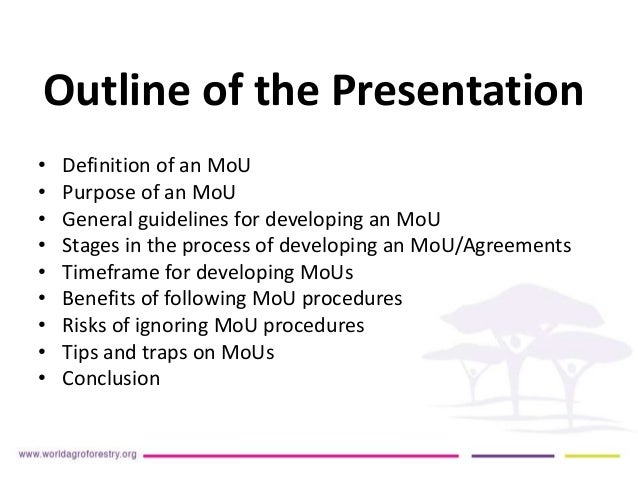


Unlike a contract, however, an MOU need not contain legally enforceable promises. Similar to a contract, a memorandum of understanding is an agreement between two or more parties. Most often, however, a court simply orders the party in breach to pay the other party enough money so as to return the non breaching party to the same position it would have been in had it performed the promises as outlined in the contract. In special circumstances, a court may order a party to actually perform its promise. One lakh.” The terms of the contract (i.e., the who, what, where, when, and how of the agreement) define the promises that each party has made to the other.Īnother key feature of a contract is that a contract should be legally enforceable by court of Law, if one party of the contract breaches the contract or any clause of contract. Most commonly, contracts involve the exchange of promises, e.g., “I promise to play for you, if you promise to pay me Rs. Generally, parties create a contract the moment that one party’s offer to do (or not do) something in exchange for something else of value is accepted by the other party, either expressly or impliedly. The parties must intend to create a legally enforceable agreement, but they need not intend to create – or even understand – that they are entering into a “contract.” The essential part of contact are (1) Parties (2) Lawful offer or proposal (3) Lawful acceptance, (4) Promise, (5) lawful Consideration and legally enforceable by law. 1. There must be a "lawful offer" and a "lawful acceptance" of the offer, thus resulting in an agreement. The Indian contract Act 1872, Section 2(h) defines the term contract as an agreement legally enforceable by law, for the formation of a contract there must be an agreement, the agreement should be enforceable by law. If so, they have likely created a legally enforceable contract or agreement regardless of whether they call it a contract or an MOU.Ī contract is a legally enforceable agreement between two or more parties with mutual obligations. The main thing is whether the parties aimed to be legally bound by the terms of the agreement or contract. There can be legal distinctions between MOU and MOA, there may be no legal or practical difference if they are written with similar language. The MOA can also be a legal document that is binding and hold the parties responsible to their commitment or just a partnership agreement. The purpose of an MOA is to have a written understanding of the agreement between parties. It is a more formal alternative to a gentlemen’s agreement, but generally lacks the bind power of a contract.Ī memorandum of agreement (MOA) or cooperative agreement is a document written between parties to cooperatively work together on an agreed upon project or meet an agreed upon objective. It expresses a convergence of will between the parties, indicating an intended common line of action, rather than a legal commitment. Source(s): NIST SP 800-47 Rev.A memorandum of understanding (MOU) is a legal document describing a bilateral agreement between parties. Source(s): CNSSI 4009-2015 under memorandum of understanding (MOU)ĭoDI 4000.19 A statement of intent between the participating organizations to work together and often states goals, objectives, or the purpose for the partnership details the terms of and conditions for the agreement and outlines the operations needed to achieve the goals or purpose. It neither includes a commitment of resources nor binds a party to a specific action. Source(s): CNSSI 4009-2015 under memorandum of agreement (MOA)ĭoDI 4000.19 A type of intra-agency, interagency, or National Guard agreement between two or more parties, which includes only general understandings between the parties. It includes either a commitment of resources or binds a party to a specific action. A type of intra-agency, interagency, or National Guard agreement between two or more parties, which includes specific terms that are agreed to, and a commitment by at least one party to engage in action.


 0 kommentar(er)
0 kommentar(er)
